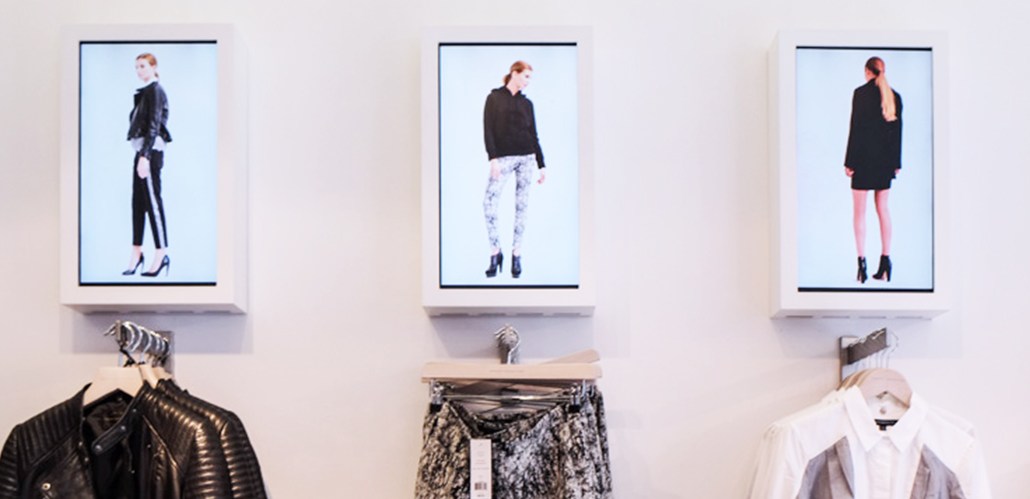Save 50% on a 3-month Digiday+ membership. Ends Dec 12.

 This is the third installment in our series The New Brand Playbook. It is sponsored by Sociomantic, a market leader in driving incremental sales at scale for e-commerce marketers with programmatic display advertising solutions for desktop, mobile and Facebook.
This is the third installment in our series The New Brand Playbook. It is sponsored by Sociomantic, a market leader in driving incremental sales at scale for e-commerce marketers with programmatic display advertising solutions for desktop, mobile and Facebook.
New technologies continue to stymie retailers who are seeing a shift in how people buy things online, on social media and in-store. What’s a peddler to do?
Never fear. Digiday has got your back: we asked retail execs for their take on where digital retail is lagging and where the biggest changes will occur in the new year.
OUT: Merging online and offline
Retailers have been bending over backwards trying to figure out how to shatter the line between the online and offline experience. At the end of the day though, they’re different experiences that don’t necessarily always have to merge.
“We’re going to see a lot of better offline shopping experiences, like the Kate Spade Saturday pop-up shop,” said Will Young, the director of Zappos Labs. “But I’m skeptical that the merging of offline/online will be a huge surge for our finances since it’s hard to make online and offline seamless.”
IN: Retail fragmentation
There are now more than 100 fashion brands successfully funded by Kickstarter. Some startups, like Quirky, incubate new brands and allow you to shop their invented products, all in one. Other startups, like Chloe + Isabel, support personal, online direct sales boutiques instead of a large e-commerce site for the Chloe + Isabel brand. The result is a vast landscape of different retailers and retail experiences. And there may not be anything wrong with that.
“What’s crazy about 2014 is that the retail is going to be more fragmented. I’m wearing a pair of jeans right now that I bought on Kickstarter,” said Young. “We’re going to see more of these small companies and less consolidation. We’re not sure what that will mean for Zappos, but it’s interesting to see that happen.”
OUT: Glossy, overly posed corporate photos on social
What once worked for direct-mailer retail catalogs isn’t working in social. People can sense what’s overdone and disingenuous, and they want to see photos of real people wearing or using products on their social platforms, not models.
“It’s not our brand images selling things, it’s our merchandiser’s personal Instagram images that sell,” said Chantel Waterbury, the CEO of retail startup Chloe + Isabel. “People are numb to professional photography. There’s something about it coming from the brand or the corporate office that people question if it’s Photoshopped. I think more brands will embrace that it doesn’t need to be high-res or professional.”
IN: Social selling
While many retailers are already engaging with their followers in non-robotic ways on social networks, they may soon turn those followers into customers right there in the app. Startups, like Soldsie, are already allowing customers to make purchases with the mere act of leaving a comment on a Facebook or Instagram post. Before long, it may be commonplace to see this behavior on other platforms.
“The year 2014 is a year where it will no longer be surprising to have your friend say, ‘I just bought a dress on Instagram,'” said Young. “It will be the year where retail transactions are no longer new on social.”
More in Marketing

How Costco stood against Trump’s agenda on tariffs, DEI this year
Costco has continuously been held up as an example of a company that has stood firm in its willingness to do what it believes is best for the business.

Brands look to experiential marketing as antidote to AI slop, digital fatigue
Brands are prioritizing experiential and IRL marketing as an antidote to ‘AI slop’ and digital fatigue.

Agencies push curation upstream, reclaiming control of the programmatic bidstream
Curation spent much of this year in a fog, loosely defined and inconsistently applied. Agencies say they plan to tighten the screws in 2026.





